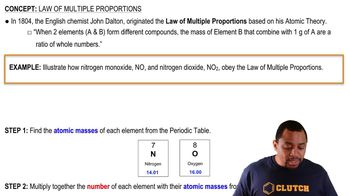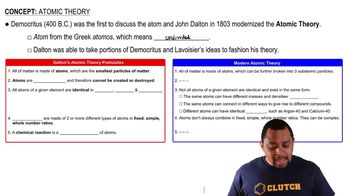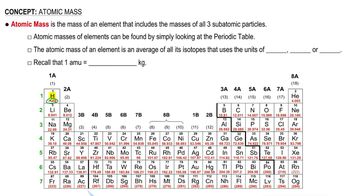Here are the essential concepts you must grasp in order to answer the question correctly.
Law of Multiple Proportions
The law of multiple proportions states that when two elements form more than one compound, the ratios of the masses of one element that combine with a fixed mass of the other element can be expressed as simple whole numbers. This principle highlights the discrete nature of chemical compounds and supports the idea that elements combine in specific ratios to form different substances.
Recommended video:
Law of Multiple Proportions
Dalton's Atomic Theory
Dalton's atomic theory posits that matter is composed of indivisible atoms, which combine in fixed ratios to form compounds. This theory provides a framework for understanding chemical reactions and the formation of compounds, as it explains how different combinations of atoms lead to the creation of distinct substances, thereby supporting the law of multiple proportions.
Recommended video:
Atomic Mass and Ratios
Understanding atomic mass is crucial for applying the law of multiple proportions, as it allows for the calculation of mass ratios between elements in different compounds. By comparing the masses of the elements involved, one can demonstrate that the ratios of the masses of one element that combine with a fixed mass of another are whole numbers, reinforcing the principles outlined in Dalton's atomic theory.
Recommended video:
 Verified step by step guidance
Verified step by step guidance


